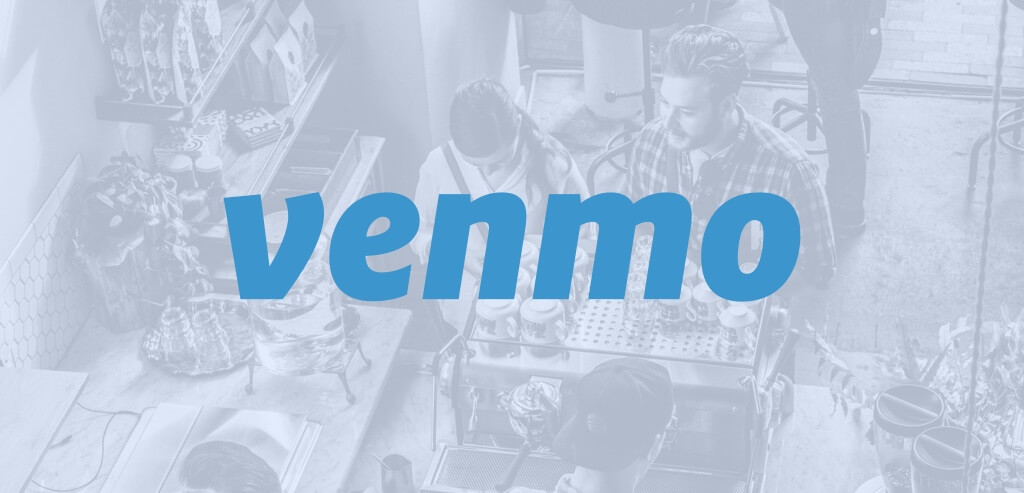Prior to 2021, Venmo was intended for payments between friends and did not have any protections or terms around business-related payments.
Starting in 2021, however, the company has launched a feature called “Business Profiles,” which allows users to send and receive business payments.
Venmo Business Profiles have similar fees and protections as PayPal, Square, and other popular small business payment processing services.
That said, Venmo is still by far the least flexible payments app when it comes to buyer protection, merchant protection, and chargebacks — especially if you accidentally use the consumer version of the app.
Today’s post will explain exactly how to avoid those issues when using Venmo for business:
- Pros and Cons of Venmo for business use
- The features, costs, and limits of Venmo and Venmo business Profiles
- How to create a Venmo business account and profile
- How to integrate Venmo into your business
- What to do if you’ve already accepted business-related payments through a personal Venmo account
- What you should know about Venmo and taxes
What is Venmo? Who is it for and how does it work?
Venmo has come a long way since its 2009 launch in New York as an app for splitting the bill at restaurants.
PayPal acquired Venmo in 2013, and has since grown the app to over 65 million users. Since adding business features, 2 million merchants now use the Venmo Business service and extra features like direct deposit and debit cards.
Venmo personal accounts are free if money is sent “from a linked bank account, debit card, or your Venmo account,” but there are fees for certain Venmo features.
Can businesses use Venmo?
US for-profit businesses can use Venmo to receive money from customers and pay business profiles. After creating a primary Venmo account, in order to accept business-related payments from customers and keep these payments separate from personal ones, all you’ll have to do is create a business profile.
Is Venmo safe for business?
Yes, Venmo is safe for business. Like other payment processors, Venmo uses encryption to protect and store information and monitors activity to avoid unauthorized transactions. It is equally safe for consumers because:
- Business accounts must apply and be explicitly authorized to accept Venmo for purchases of goods and services; and
- Buyers are protected via the Venmo Purchase Program.
Generally speaking, it is no more risky to use Venmo to accept payments than any Point of Sale or other payment processing option; having been trusted for $159 Billion total payment volume in 2020, you can be confident in using Venmo for business.
Nonetheless, Venmo terms of service heavily emphasize the following:
- Do not use Venmo to transact with strangers, especially for sale of goods and services.
- Keep in mind that Venmo does not have a payment protection program; once a payment is sent, you cannot get it back. Therefore verifying the recipient is crucial.
- Business transactions must be processed using the Venmo Business Profile.
For more information on this term of use, read the User Agreement and the section below on security.
How much does it cost to use Venmo for business?
Creating a Venmo business profile is free and there are no monthly fees. Also, unlike transfers between personal accounts, payments made by customers to a business profile funded by a credit card are exempt from a 3% fee. However, after your first month, Venmo does charge business profiles a fee of 1.9% + $0.10 per transaction with customers.
What are Venmo’s accepted payment methods and payment limits?
Venmo accepts debit, credit (American Express, Discover, Mastercard, and Visa), and prepaid cards.
Venmo’s payment limits are as follows:
| Overall Combined Sending Limit: $6,999.99 | Person-to-Person Payments | Authorized Merchant Payments | Venmo Mastercard Debit Card Purchases |
|---|---|---|---|
| Maximum Weekly Spending: | $4,999.99 | $6,999.99 | $6,999.99 ($3,000.00 per merchant; $400.00 daily cash back) |
| Per Transaction Limit: | $4,999.99 | $2,999.99 | $2,999.99 |
What are the positives and negatives of using Venmo to accept payments? What types of businesses should use Venmo for business?
The following chart details some of the positives and negatives of using Venmo for business:
Pros
- Well-known and popular payment processor
- Convenient access to business transactions if already used for personal
- Many payment methods on Venmo means more payment options for customers
- Businesses are marketed to other users when a transaction is shared on a customer’s feed
- Allows for touch-free transactions (through the app and via QR codes)
- Ability to offer targeted rewards and cash back to customers
- Useful for businesses with young, tech-savvy customers
- Reasonable fees
Cons
- Almost wholly mobile; cannot be viewed on a website on your computer
- Can only have one account user; not suitable for partnerships
- Customers may not like public sharing of purchase history
- Various account limits
- Cannot be used by nonprofits
- US only
Venmo for business is targeted primarily towards small sole proprietor businesses, including side gigs and registered businesses, but it is also used by large corporations like Hulu, Uber, and Abercrombie & Fitch.
Examples of users who commonly use Venmo for small business include:
- Artists
- Photographers
- Professional service providers
- Health and beauty shops
What are some of the alternatives to Venmo for business?
There are many alternatives to Venmo that could be more appropriate for your business. To help you consider your options, the following are the most prominent competitors to Venmo:
Since PayPal owns Venmo and the two have many similarities, you may be wondering why you should choose one over the other. To help you compare the two, the following table details their most notable differences for business users:
| Feature | Venmo Business | PayPal Business |
|---|---|---|
| Merchant commercial transaction fees | 1.90% + $0.10 | 2.90% + $0.30* |
| Customer credit card fees | None | None |
| Withdrawal limit (per transaction) | $2,999.99 | $25,000.00* |
| Non-profit use | No | Yes |
| International use | No | Yes |
The main difference between Venmo and Paypal for business is that Venmo is intended for smaller ticket items and more casual payments, while PayPal is intended for larger ticket items like invoicing.
Both can be used, but customers in the street at e.g. a food cart are much more likely to have Venmo than PayPal — so having Venmo available alongside PayPal and/or your credit card swiper of choice is key.
Venmo has lower overall fees. For smaller ticket items, the fees in aggregate can be around half what you get from PayPal.
How do you sign up for Venmo for business?
Setting up a Venmo business profile can be done in four easy steps:
- Create a Venmo account
- Create a business profile via the app’s main menu
- Customize your profile
- Publish your profile
For more information on how to create a Venmo business profile, see the Business Profiles section of their website.
How do you accept payments from customers through Venmo?
Visit the following webpages to learn all the ways you can use Venmo for business:
- Accept Venmo at your point of sale
- Integrate Venmo into your business’ app
- Integrate Venmo (and PayPal) into your mobile checkout
Once you’re all set up, make sure you direct buyers to your business profile to make payments; do not have them use your e-mail address or phone number as it will direct payments to your personal rather than business account.
How do you send business-related payments through Venmo?
If you want to use your business profile to make a business-related payment, simply link your desired payment method to your business profile and proceed using that profile. Note that you must set up the business profile “as a registered business” in order to link the payment method only to your business profile; if you register as a sole proprietor, any payment method linked to your business profile will also be linked to your personal profile.
How do you record and report business payments already accepted through a personal Venmo account?
For tax purposes, record and report all income received through personal and business Venmo accounts as you would any similar business-related transaction.
As for keeping personal and business funds separate, transferring past earnings through Venmo is easy. Simply perform a balance transfer of the prior amounts received from your personal account to your business account using the “Transfer Balance” menu option. Once that is done, if you ensure that all future payments are processed through your business profile, everything should be organized and correctly allocated moving forward.
What should I know about Venmo and taxes?
As per Internal Revenue Service (IRS) regulations, Venmo and other payment processors are required to report the total payment volume your business account receives if, in a calendar year, it is at or above:
- $20,000 in gross payment volume from sales of goods or services in a single year, and
- 200 payments for goods and services in the same year.
*Note: For residents of Massachusetts, Maryland, Vermont, and Virginia, the threshold is $600, irrespective of the number of transactions. For Illinois residents, the threshold is $1,000 with 3 or more transactions.
If your business meets these thresholds, it will receive a Form 1099-K; if it does not meet these thresholds, a Form 1099-K will not be issued.
For more information on Venmo and taxes, visit their Business Profiles Tax FAQ webpage.
Summary
To summarize:
- Venmo is a payment processor just like PayPal.
- Businesses can definitely use Venmo, however you must use a business profile when doing so.
- Gross payment amounts under $20,000 are not submitted to the IRS by Venmo.
If a large portion of your customers are young and tech-savvy, Venmo access for small ticket purchases is a welcome relief when credit cards are not viable or convenient.
Resources
For more information on how to use a personal account, see their Venmo like a pro webpage.
For more information on how to protect yourself while using the platform, I’d recommend reading the following Common Scams on Venmo.
 Patrick Ward
Patrick Ward 
 Best HR Tools for Fast-Growth Companies
Best HR Tools for Fast-Growth Companies